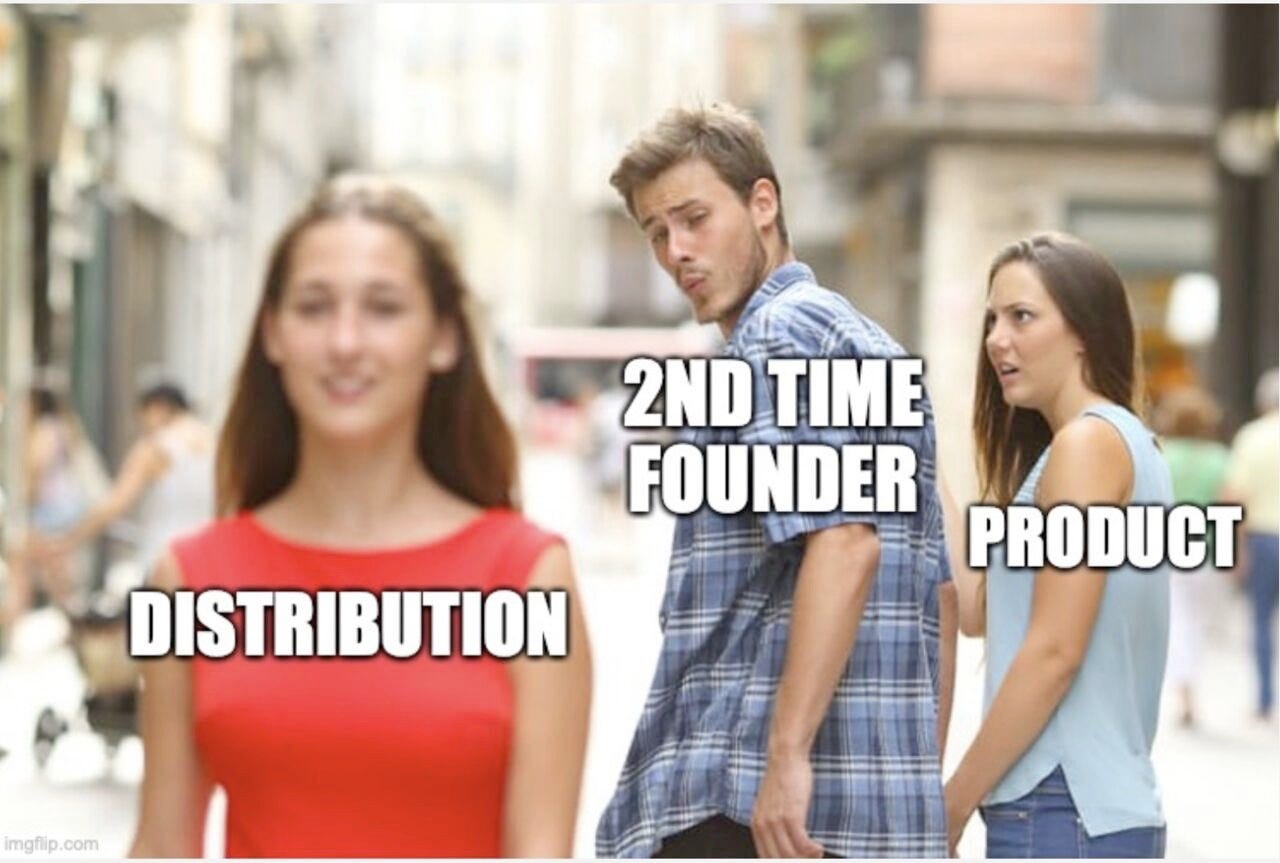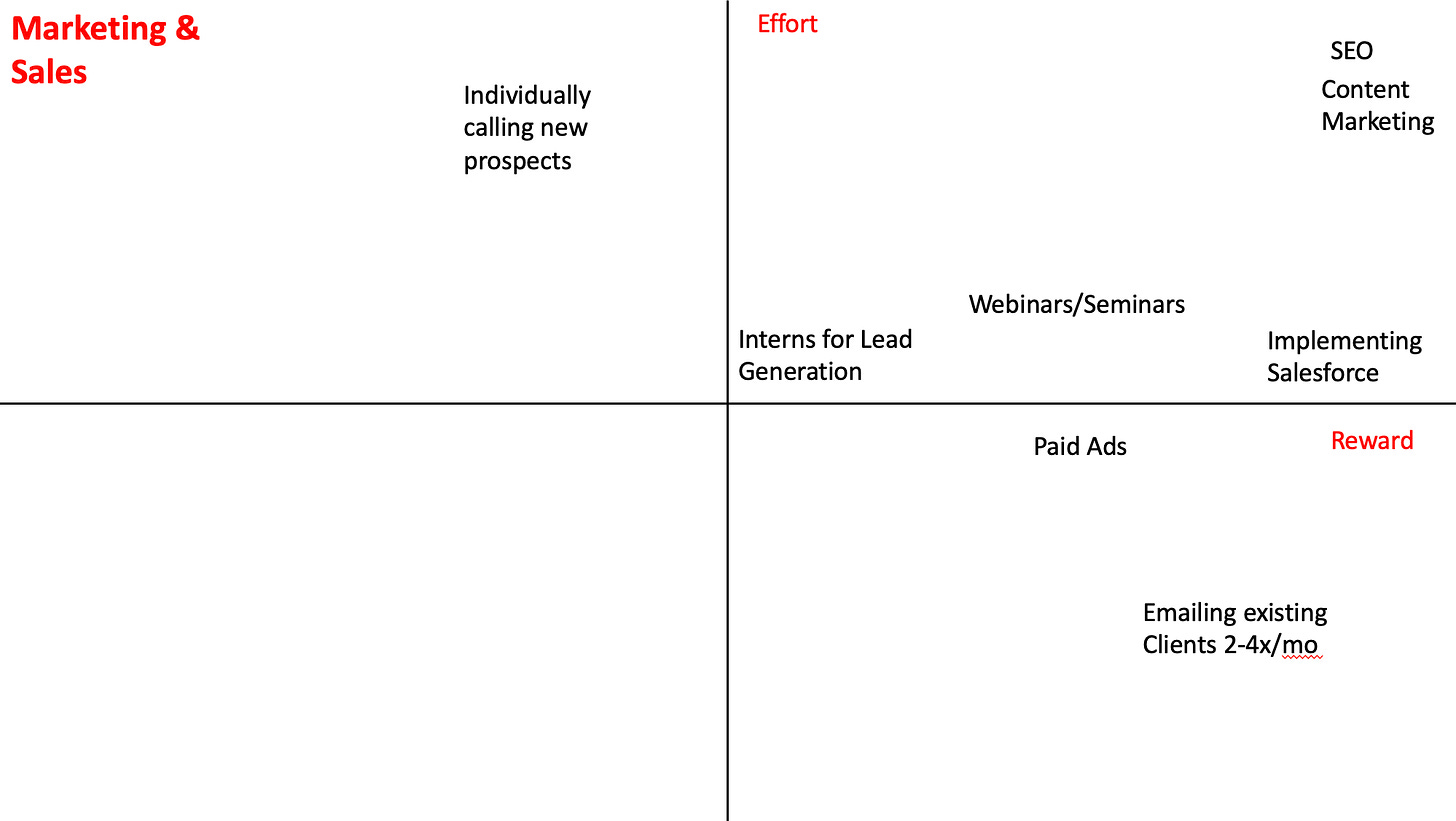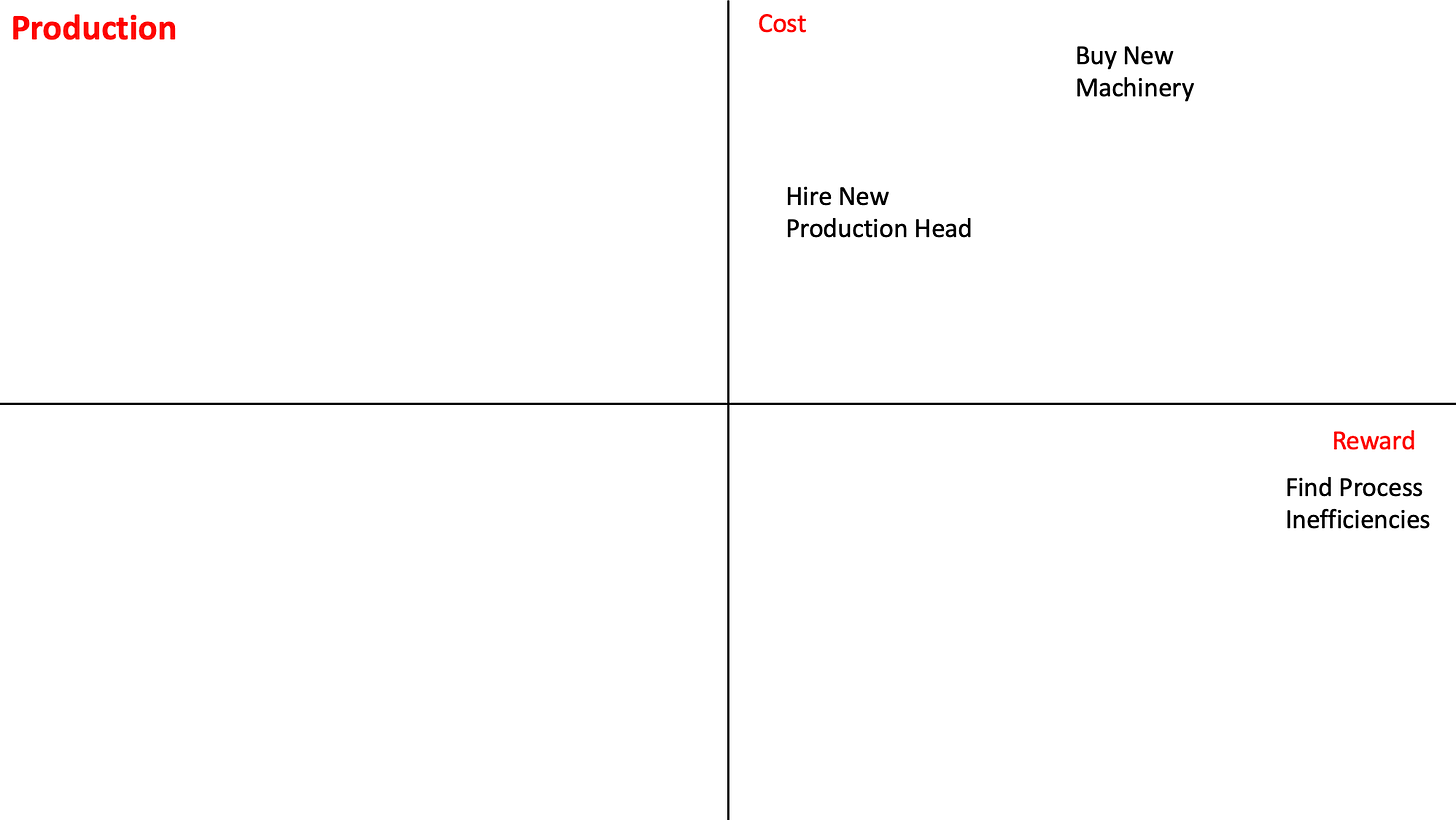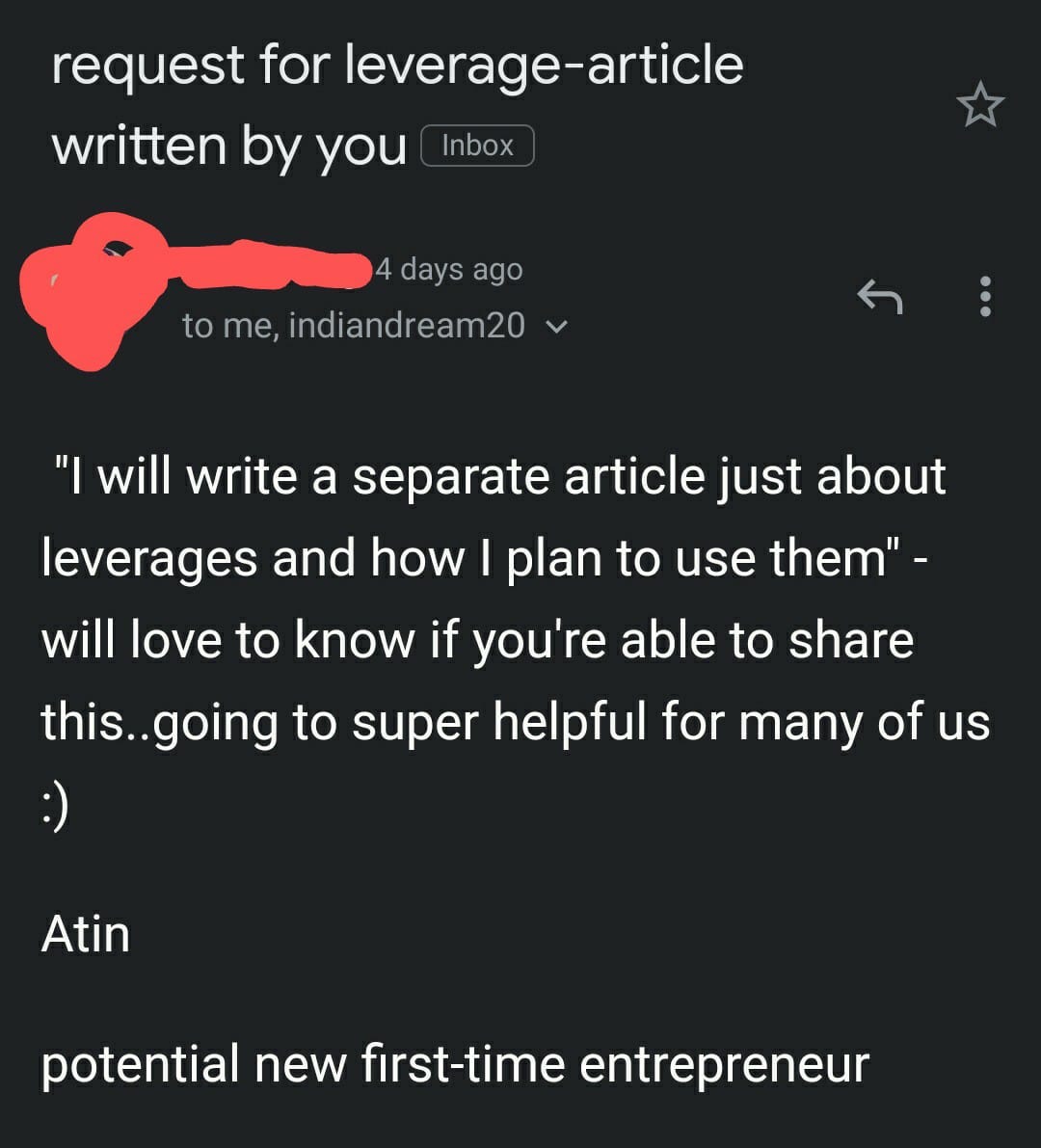In this article, we look at high leverage activities you can use to scale up your business. The Indian Dream is a weekly newsletter that gives you latest Business Ideas, Opportunities and Trends direct to your inbox. Join 1,500+ other entrepreneurs looking for their next big business!
This newsletter is going to be about how an Entrepreneur can use various leverages to convert small inputs into large outputs for their business. Truly understanding the power of leverages and how they can work for their business can be transformational for an entrepreneur. And this is our attempt to help you make sense of it.
Let’s jump right in.
How do Levers work in Business?
A lever multiplies an input force to provide a large output force - you probably remember this definition from your 8th Standard Physics class.
In the same way, high-leverage activities in business are those that produce the most impact (or highest reward) with the limited resources an entrepreneur has in hand (time, money, team).
For example - at The Indian Dream, we’re constantly looking for new ways to increase our distribution. I spent 10 minutes building the below quadrant to identify the highest leverage activities we use to improve the distribution of our Podcast.
The highest leverage activities would be those in the bottom right quadrant and the lowest leverage would be those in the top left.
This analysis clearly shows me that referrals and cross promotions are probably where we should focus. Hence, we’ve done many cross promotions in the past 2 months.
All the activities I listed above also clearly fall in 4 types of leverages - can you guess which activity would fit with which leverage?
Types of Leverage
These are the leverages that we’ve identified and where we believe they fit best. I’ll provide an example about how you can think about these leverages to analyse your own business or career at the end.
1) Capital Leverage - 💰💰💰 - Manufacturing & Financial Markets
2) Labour Leverage - 👔👔👔 - Services
3) Product & Media Leverage - 🎙️🎙️🎙️ - SaaS & Media
4) Process Leverage - 🛠⚒🛠⚒ - Solopreneurs
(Our Recommendation: Read ‘Capital in the 21st Century’ by Thomas Piketty which describes the relationship & history of Capital & Labour in detail)
1) Capital Leverage - 💰💰💰
You need money to make money
Capital leverage is the investment that you make in order receive returns in the future. You invest Rs. 100 in the hopes of receiving Rs. 20 every year for 10 years. This investment could be in a machinery, land, mutual funds or as a Seed Investment in a business.
Capital leverage still plays a large part in building modern businesses. Whether you want to start a manufacturing business or SaaS business - it’s much easier if you start with a lot of capital.
Even in matured businesses, Capital Allocation is still seen as the primary job of most modern CEO’s.
Capital leverage is also the main tool of Investment Bankers, Hedge Fund Managers and everyone else who uses other people’s money to make more money. Thus, understanding Capital Leverage has become one the highest paying jobs in the world.
How do you use Capital Leverage?
Capital allows you to:
Build Factories - using machinery & labour leverage.
Invest in Businesses - using labour leverage.
Build SaaS products - using labour & product leverage.
Build a Media Empire - using labour & media leverage.
You can convert Capital into any other of leverage, which we will go deeper in below.
How do you measure Capital Leverage?
My favorite accounting ratio is ‘Return on Capital Employed’ (ROCE) which tells you exactly how much output you’re getting for the given input. I’ve seen well run manufacturing businesses providing ROCE of >30% consistently, year after year. These are much better returns over the long run than even the stock market.
2) Labour Leverage - 👔👔👔
People working for you.
In the old world of manufacturing, labour was homogeneous - one labourer will give you exactly the same output as another. Labour leverage is a lot trickier in the modern world of the knowledge worker where people are heterogeneous with wildly different outputs and little to no signals regarding their quality.
But, the core premise remains true, people working for you can help you maximize the impact you can create with your resources.
How do you use Labour Leverage?
Service businesses rely entirely on labour leverage. They’re generally founded on the skills of their founders and scale up by finding or training people into clones or near clones of the founder.
Vineet Gupta, the MD of the test prep business Jamboree Education, told us that his entire business was based upon hiring the right people and training them into clones of his wife - the founder and original teacher at Jamboree. Checkout the episode we discuss how he build Jamboree & Ashoka University.
As a result, while you can easily buy Land & Machinery using Capital - using labour leverage is a lot harder in the modern world.
How do you measure Labour Leverage?
Usually by taking payroll as a percentage of revenue - manufacturing businesses generally see 5-10% while services businesses are usually at around 20-30%. Alternatively, you can measure the revenue per employee.
3) Product & Media Leverage - 🎙️🎙️🎙️
Products (and media) that have no marginal cost of replication.
SaaS and the New Media economy.
Product Leverage has dominated the business world for the past decade. Products no longer need to be manufactured - Facebook, Google and the other big tech firms grew into giants because there was little extra cost of delivery to a million or 10 million people.
However, Saas, like any product, requires a distribution network in order to be successful. Product + Media leverage is a deadly combination.
Media leverage is currently going through a systemic change. Media used to be dominated by large businesses (newspapers, record labels, TV channels) who controlled the media landscape and decided which people and shows would become famous. Media leverage was controlled by organisations and people that were already large and famous.
YouTube, Substack, Podcasts, Instagram and other forms of online content creation are allowing ordinary people to become media houses and own their audiences. They no longer need to be reliant on large corporations to bestow them with media leverage. Once people build a large audience, they can use this audience to leverage their business in any way they desire.
Media is distribution.
How do you use Product or Media Leverage?
Media leverage can be used in any way you want:
Scale up your existing product.
Build a new product and sell to your audience.
This is why so many SaaS businesses have started buying large audiences. Makerpad recently got acquired by Zapier, The Hustle was bought by Hubspot, Indie Hackers bought by Stripe. The SaaS businesses have already perfected their product and are now looking to use Media leverage to expand even further.
How do you measure Media Leverage?
Social Clout - your IG, Twitter, FB followers or your Newsletter subscribers or however else you measure your followership.
4) Process Leverage - 🛠⚒🛠⚒
Improving efficiency.
The book ‘Company of One’ by Paul Jarvis details out how various Solopreneurs were able to build million dollar businesses with no employees but themselves. At the time I read it, I didn’t understand how I could implement this in my own life - how can one person do everything required to run a million dollar business?
How do you use Process Leverage
Processise everything. Even the smallest activities.
We try to processise and templatise as much as possible on The Indian Dream. We have templatised guest emaisl, welcome messages, Newsletter outlines and have even made an SOP for Podcast Production. And we store and run all of this through a Notion system made by Siddharth.
Without these templates & processes, we wouldn’t have been able to do Podcasts, Newsletters, WhatsApp Groups, Live Sessions and everything else that we want to add. We’re able to achieve a lot more with the same efforts due to process efficiencies.
Caution: Creating processes for something you have not done yourself can be difficult and even lead to mistakes.
Processes Improve Returns on Every Leverage
Labour
Hiring for a role becomes a lot easier when you’ve performed the task yourself and have created a process for it. This is especially true for service businesses where you can more effectively judge skill levels based on the process requirements.
Capital
Ask any manufacturer - Standard Operating Procedures (SOP’s) greatly improve the effectiveness of any manufacturing process thus improving your RoCE.
Media
Content calendars, content templates and other processes will reduce the cognitive difficulty of producing content thus allowing you to relax or to improve your distribution & content.
How can you use these Leverages to scale up your Business or Career?
The Pareto principle can help you find high-leverage activities. It states that in many situations, 80 percent of the results come from approximately 20 percent of the effort. Addressing this 20 percent is therefore a high-leverage activity. The high-leverage plan is to find and focus on the smallest amount of the work that will bring about the best results.
- Super Thinking by Gabriel Weinberg and Lauren McCann
Before you even start thinking about the high leverage activities that you can use to scale up your business - you need to think about your goals and the time frames. Do you want to:
Scale up Marketing & Sales in the next 1 year?
Make Manufacturing more efficient?
Spend less time personally involved in operations?
Once you have the goals in mind, use your understanding of the different types of leverages to find the 20% of changes you can make to provide the 80% impact to your business.
For example, if I wanted to scale up Marketing & Sales for my B2B business - there might be some low hanging fruits that I can address first such as:
Content Marketing (Media Leverage)
Running a Google Ads campaign (Capital Leverage)
Webinars or Seminars about Industry Topics (Media Leverage)
Interns for Lead Generation (Labour Leverage)
Implementing a CRM software (Process Leverage)
Or let’s say I wanted to scale up my Manufacturing Capacity. I could:
Buy new machinery (Capital Leverage)
Analyse the processes to find inefficiences (Process Leverage)
Hire a new Production Head who understands Manufacturing better than me (Labour Leverage)
This newsletter is dedicated to Atin who made sure that I stick to my promises. This is the email that he sent to ensure I write this article!
References
Labor and Capital Are Old Leverage by Naval
Super Thinking: Upgrade Your Reasoning and Make Better Decisions with Mental Models by Gabriel Weinberg an Lauren McCann
Product and Media are New Leverage by Naval
Personal Leverage: How to Truly 10x Your Productivity by Nat Eliason.









Amazing Article..thanks for sharing these valuable content!